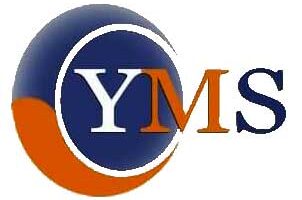Pay attention to the balance sheet’s footnotes in order to determine which systems are being used in their accounting and to look out for red flags. If you are a shareholder of a company or a potential investor, it is important to understand how the balance sheet is structured, how to read one, and the basics of how to analyze it. Asset accounts will be noted in descending http://mylanguage.ru/NewsAM/NewsAMShow.asp?ID=408028 order of maturity, while liabilities will be arranged in ascending order. Under shareholder’s equity, accounts are arranged in decreasing order of priority. When you’re starting a company, there are many important financial documents to know. It might seem overwhelming at first, but getting a handle on everything early will set you up for success in the future.
How often are balance sheets required?
Explore our online finance and accounting courses, which can teach you the key financial concepts you need to understand business performance and potential. To get a jumpstart on building your financial literacy, download our free Financial Terms Cheat Sheet. If a balance sheet doesn’t balance, it’s likely the document was prepared incorrectly. External auditors, on the other hand, might use a balance sheet to ensure a company is complying with any reporting laws it’s subject to. Typically, a balance sheet will be prepared and distributed on a quarterly or monthly basis, depending on the frequency of reporting as determined by law or company policy.
How do you calculate shareholders’ equity?
You may have omitted or duplicated assets, liabilities, or equity, or miscalculated your totals. Because companies invest in assets to fulfill their mission, you must develop an intuitive understanding of what they are. Without this knowledge, it can be challenging to understand the balance sheet and other financial documents https://medconfer.com/node/4410 that speak to a company’s health. The composition of the balance sheet is composed of three pieces, which are assets, liabilities, and shareholders’ equity. It should not be surprising that the diversity of activities included among publicly-traded companies is reflected in balance sheet account presentations.
A simple balance sheet template
If Companies House requires it, an accountant is the best person to prepare and submit the accounts, as they will know the generally accepted accounting principles. The easiest way to prepare a balance sheet is to use an accounting software package, which will automatically produce the report from the reports list. We have a free template download if you want to produce one using a spreadsheet. Shareholder equity or Owner’s equity is the difference between a company’s assets and liabilities.
In the account form (shown above) its presentation mirrors the accounting equation. That is, assets are on the left; liabilities and stockholders’ https://www.educationscapes.us/how-to-achieve-maximum-success-with-3/ equity are on the right. The owners’ equity section may also show dividends paid to owners or shareholders during the year.
- They are grouped as current liabilities and long-term liabilities in the balance sheet.
- The left side of the balance sheet outlines all of a company’s assets.
- By seeing whether current assets are greater than current liabilities, creditors can see whether the company can fulfill its short-term obligations and how much financial risk it is taking.
- Like assets, liabilities can be classified as either current or noncurrent liabilities.
- These operating cycles can include receivables, payables, and inventory.
Liabilities are presented as line items, subtotaled, and totaled on the balance sheet. After you’ve identified your reporting date and period, you’ll need to tally your assets as of that date. Conceptually, retained earnings reflect the cumulative earnings kept by a company since its inception rather than distributing excess funds in the form of shareholder dividends. The second source of funding—other than liabilities—is shareholders equity (or “stockholders equity”), which consists of the following line items. The next section consists of non-current assets, which are described in the table below. She’s got more than twice as much owner’s equity than she does outside liabilities, meaning she’s able to easily pay off all her external debt.
Balance Sheet Analysis
Balance sheets of small privately-held businesses might be prepared by the owner of the company or its bookkeeper. On the other hand, balance sheets for mid-size private firms might be prepared internally and then reviewed over by an external accountant. The data and information included in a balance sheet can sometimes be manipulated by management in order to present a more favorable financial position for the company. The balance sheet only reports the financial position of a company at a specific point in time.

